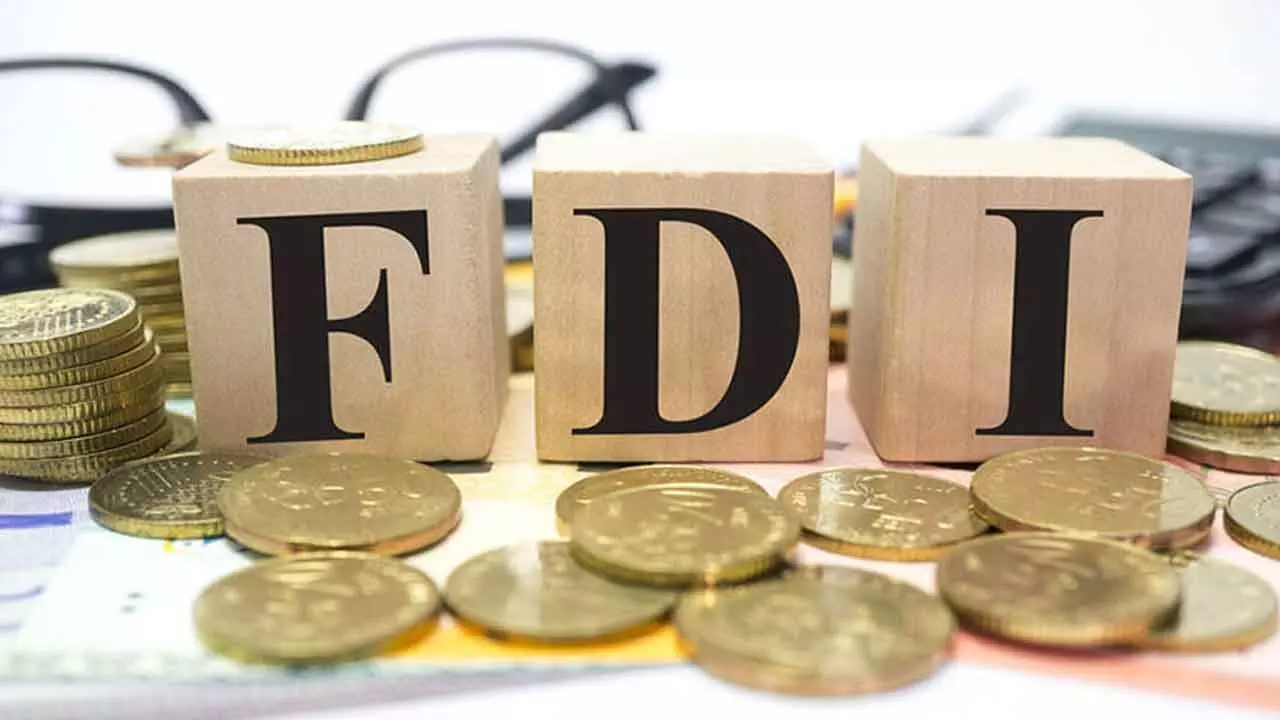Will Mezzanine Financing Be Next Big Thing For FDI In India?
India considering allowing mezzanine financing under FDI rules to attract more foreign investment. This move aims to provide greater flexibility to strategic foreign investors
Will Mezzanine Financing Be Next Big Thing For FDI In India?

Mezzanine financing, a hybrid of debt and equity, would offer foreign investors a new avenue to invest in Indian companies. While the proposal is still under discussion, the Finance Ministry is reportedly supportive of the idea
If sources are to be believed, then India may allow mezzanine financing under FDI rules. Though proposal to this effect is still at discussion stage, finance ministry is likely to be in its in favour.
The government is mulling expanded measures to allow greater flexibility for strategic foreign investors to buy stakes in local companies after offshore investment slumped to a five-year low, sources opined.
Policymakers are looking at the option of foreign investments through a mix of equity and debt, which aren't permitted currently, the sources said, noting that a final decision is still pending.
At present, India's foreign exchange laws do not recognise mezzanine instruments in corporate financing, which are common globally, particularly in large transactions involving mergers and acquisition.
Mezzanine financing is a hybrid system of financing, which incorporates the features of equity and debt, both. It gives the lender a right to convert their debt into equity shares, in case of a default. Mezzanine debt is subordinated debt, and close to being the last to be paid off. It is senior only to equity shares. Hence, it is high-risk debt and carries a very high rate of interest, as compared to any other debt. This form of financing is typically used in acquisitions, as it bridges the gap between debt and equity. Borrowers generally take on mezzanine debt after they have exhausted other sources of financing. Mezzanine financing is used more by well-established companies to fund projects and growth, rather than companies in the start-up phase.
Gross FDI, which includes reinvested earnings and equity inflows, fell to $71 billion in 2023-24, the lowest since 2018-19, from $71.4 billion in 2022-23 and $84.8 billion in 2021-22, according to data from the Reserve Bank of India.
The proposal to further expand foreign investment options could lead to an additional $20-30 billion in overseas inflows into the South Asian economy, according to internal estimates, said one of the three sources. India attracted 2.1 per cent of global FDI in 2023 after peaking at 6.5 per cent in 2020, according to ratings agency India Ratings and Research.
Finance Minister Nirmala Sitharaman recently said India needs $100 billion FDI each year to meet its investment needs, up from $70-$80 billion at present. Talking toBizz Buzz, MV Hariharan, ex-treasury head, SBI said, “Such radical reforms have been mooted in the past too, with RBI taking the lead. Previous Governors have tried to shake up the domestic markets and inject more dynamism and momentum towards opening up sectors with innovations accompanying such initiatives.”
However, after the GFC, and the collateral impact then still resonating in markets all over the world, many countries are leery to rock what they see as boats sailing in uncharted waters with uncertainties lurking everywhere, he said.
Indian markets have been insulated, relatively stable, but still buffeted by the evolving landscape of new normals daily, spiced up with the volatile geopolitics.
Therefore, the obligations to keep INR reigned in and tethered, to address the lopsided trade balances and the import bill under hawkish oversight are priorities. Volatile currency flows seeking elusive yields add to the imponderables. So it's definitely bound to ensure that the Govt in consultations with the RBI, will hasten, but slowly, steadily and with trepidation.
Financial literacy and inclusion are still in a very nascent stage, with awareness, agility and mitigation measures to address sudden change and ring fence market players and other stakeholders still very much a Work In Progress. Sophistication in products for encouraging Risk appetite with full understanding of the downsides are considered very attractive but teeming with huge unknown unknowns.
Anil Kumar Bhansali, head of Treasury at Finrex Treasury Advisors said, “There are various ways in which mezzanine debt can be structured, the most common being a legal right to convert to equity, in case the debt is not repaid on time or repaid in full. The percentage of interest can be structured differently, with some portion being fixed and some portion variable. In mezzanine financing, interest can also be paid by increasing the principal amount, instead of frequent cash payouts.”
Companies are currently allowed to raise equity or securities that are compulsorily convertible to equity under the FDI rules, where caps are imposed on foreign investment for some sectors such as banking and defence. They can also raise debt from foreign sources under a separate set of rules which limit the cost and use of loans and bonds raised. Allowing investments through mezzanine instruments provides greater flexibility for foreign investors. It also allows for an easier exit since investors find it tougher to access buyers for large chunks of equity unlike for debt. However, these investments could also stoke currency volatility and put pressure on the rupee.
Though Mezzanine Financing is not permitted in India in Feb-24 Kotak Fund partly raised $150 million at 18-20 per cent to finance Matrix Lab founder’s Viatris buy and was arranging another $300 million and in October GPS Renewable’s Arya raised Rs 100 crores from Incred, Sparks Capital.


